Why Royal Norwich is shaping the future of golf clubs
Published: Last updated:
Royal Norwich Golf Club was on the brink of extinction. Now it’s the blueprint for golf clubs of the future.
If you think the Royal family has had a tumultuous time of late, spare a thought for one of Britain’s Royal golf clubs. Royal Norwich, founded in 1893 and granted royal status by The Duke of York (later King George V), found itself in a predicament all too common among golf clubs nowadays. Afflicted by an ageing membership and a societal shift that means fewer people have enough spare time to justify a golf membership, the club’s future was uncertain at best.
RELATED: Golf World Top 100: The best golf courses in England
It’s a set of circumstances that sees dozens of UK courses close each year. Nine went last October alone.

When housing developer Persimmon Homes offered the club £17m for its land in 2014, it looked as though Royal Norwich would become another statistic; another club set to be erased by bulldozers. But the members had a choice: accept the course closure and each walk away with some money, or support an audacious plan to relocate the club seven miles down the road. Some 83 per cent of them voted for the latter.
Related: How hard is it to design a golf course?
The club’s new home would be the Weston Estate, at the time occupied by Weston Park Golf Club, another club facing a similarly uncertain future.
The plan was grand, but simple: buy that site and use it to build a golf course and facility fit for the future. In 2016, Weston Park Golf Club closed to allow work to begin. Its members were invited to move across to Royal Norwich while the new course was being built.

At dusk on Sunday, September 15, 2019, the final putt dropped at the original Royal Norwich Golf Club. First thing Monday morning, September 16, the first drive was struck at its new home.
Now, on our pre-lockdown visit in March 2020, Royal Norwich finds itself in rude health. Membership has grown from 400 to 1,300. Some of that increase can be attributed to the merger of two clubs and two sets of members, of course, but there’s a lot more to it than that. Royal Norwich’s move wasn’t so much a relocation as a rebirth.
RELATED: Europe’s best new course since Kingsbarns
The club today is unrecognisable from its former self. That’s because the club saw its fresh start as an opportunity to create something new and ready to meet the needs of the modern world in a way few golf clubs currently do. That meant far more than an excellent 18-hole championship course designed by European Golf Design’s Ross McMurray, the man whose work shaped two of the last three European Ryder Cup venues, at Celtic Manor and Le Golf National. It meant a whole new breed of golf club. It meant becoming more than a golf club.

“Originally, when we were trying to pitch it to prospective members, it started off with lots of talk about the golf course,” says director of golf, Neil Lythgoe. “But that evolved and we ended up talking more about The Stables and the culture the new club was going to have. In the end, we found the culture was selling it to people more than the facilities themselves.”
Royal Norwich doesn’t feel anything like a normal golf club, which is precisely what they envisaged. They even secured permission from Buckingham Palace to have the words “golf club” removed from the name. There is no Royal Norwich Golf Club anymore, only Royal Norwich. It has been as much a revolution as an evolution.
‘The Stables’ is what you would call the clubhouse, if it even slightly resembled one. “We’re not calling it the clubhouse, we’re calling it The Stables,” says operations manager Danny Chapman. “So when you say to your partner – ‘Shall we go to The Stables for lunch?’ – it’s different to saying, ‘Shall we go to the golf club? We can market it completely differently.”

That simple change and shrewd marketing has already seen The Stables host numerous sold-out events, from Christmas and Valentine’s Day, to floristry classes and chocolate making. “We used to sell 40 tickets to the club Christmas dinner,” says Phil Grice, general manager. “This time we sold 210 tickets in two days. There was a vegan and vegetarian cookery class in the diary, and I just laughed. They said, ‘Don’t laugh, it sold out within two hours’. That shut me up.”
Not many golf clubhouses have their own micro-brewery or micro-bakery. Few have pizza ovens. A fitness suite. A family room. Bikes for hire. Nature trails. A weekly 5km run. Mini croquet. Petanque. A kids’ outside play area with mini tractors provided by John Deere. Royal Norwich has all of the above – and more.
“When you’ve got a client base, you’ve got to look to give them more than just golf nowadays,” says Grice. “Tesco used to be just a fruit and veg wholesaler. Now I buy my petrol there and my wife banks with them. Our own brew is the fastest-selling product behind the bar, apart from coffee, and it’s the most profitable thing we sell.
“At the old club, we were a one-trick pony; if you weren’t going to play 18 holes, you didn’t come up to the club. When you come up here, half the people are just sat there doing a bit of work or they’ve come up for a coffee. They’re not necessarily members or people who are ever going to play golf.
RELATED: 10,000 trees felled – the renovation of Woodhall Spa Golf Club

“At the old club, 90 per cent of the members were men. That’s the same across the country. And nobody would ever bring their wife up there. It was a male-dominated place. We’re trying to make this completely different. There are no pictures of dead people on the wall. There are no lists of names that don’t mean anything.”
Golfers wanting a taste of the old school will be comforted by the presence of a member’s lounge at the back of the building, where they’ll be able to sit by the fire with a coffee or beer and watch football or golf on television. The big change at Royal Norwich is far more than just a fancy building, though.
“There was a monster gap in the market for something different,” says Grice. “It’s creating a culture and a vibrancy. The first thing is to make people feel at home and comfortable. When we were looking for inspiration, we barely looked at golf clubs, because there weren’t any that were doing what we wanted to create. We looked at business clubs, hotels, lots of different venues.
“It’s even simple things like having a reception desk so everyone is greeted as soon as they arrive, not wandering around not knowing where they’re meant to be. It’s a fundamental thing for us to greet you off the golf course as well.
“Ninety-nine per cent of golf courses take your money, send you out there, and when you come off, that’s it – you’re kind of left to your own devices. We want to show you that we care. And that creates a different feeling.”

Freedom of choice
Royal Norwich certainly feels different, and the results have been immediate. The average age of members has gone down from 69 to 54. The percentage of female members has risen from 10 per cent to 20, with Grice saying he’ll be shocked if women don’t make up a quarter of the membership by the end of 2020.
“We don’t separate by gender in any way, shape or form,” he says. “There are no men’s or ladies’ tees. Anyone can tee off from whatever set of tees they want. There’s no restricting the back tees for big competitions. If you want to play off the front tees, go and play off the front tees.”
Three-quarters of club competitions are open to everyone, with husbands and wives often playing together. Cleverly, the five sets of tees don’t include the traditional colours of red, yellow and white, which would likely lead golfers to default to what they know. Instead, golfers will choose from gold, navy, silver, black and bronze, with total yardages ranging from 7,209 yards to 5,339.

Around half of Royal Norwich’s 1,300 members are ‘points-based members’. For £495 you receive 100 points. A round on a Saturday morning will cost you eight points, but play on a weekday afternoon and you’ll use half that. It’s a shrewd way of overcoming the problem most clubs face, with everyone fighting for tee times on a Saturday and Sunday morning, while leaving the course virtually deserted most afternoons.
Crucially, the club has gone out of its way to ensure a points-based member feels just as valued as a seven-day one.
“There used to be pride in being a ‘full’ member and a stigma attached to being a points-based member,” says Grice. “We’ve done away with that. It’s like two people staying in the same hotel. One opts for all-inclusive and the other for bed and breakfast. The fact is, you’re not a drinker, so why would you go all-inclusive when you don’t drink? Why pay all that money for something you’re not using? But you’re still staying in the same hotel. You are no less valued. It’s not a second-class membership.”
Related: Explained – The new World Golf Handicap System
Points-based members have all the same rights as inclusive members, who pay £1,695 per year. Members of any variety can use the practice facilities (including the six free-to-use Trackman units permanently installed on the range), maintain a handicap and enter club competitions. This equality extends to Royal Norwich’s junior section, which numbers 150. For £150 a year, they receive up to 40 hours’ coaching and can play the course at any time.
“If you’ve got a seven-year-old who joins as a member, he or she is every bit as valued as anyone else,” says Grice. “They have the same rights to book tee times and play the course.”

Grice, who is chairman of the Golf Club Managers’ Association, believes the switch towards points-based memberships puts them ahead of an inevitable shift in golf club membership as a whole.
“You look at the numbers and golf membership has gone down,” he says. “But you’re looking at the wrong numbers. Participation numbers are through the roof. Around 9.5 million people in the UK played golf last year, in one way, shape or form. Only 900,000 are members of a golf club, but that’s because golf clubs aren’t fit for purpose anymore.
“I bet you anything you like that in 15 years’ time 70 per cent of golf club membership will be points based. People aren’t as fussed about being a member of one club anymore. You can be a member of a few and play a different one each week. That’s part of the fun of it. At each club you’ll have your discount card and be part of the family – why wouldn’t you? What a great thing.”

Grice sees this evolution not only as good for golfers, but a necessity for clubs looking to secure and safeguard their futures.“I would guesstimate that a huge percentage of private members’ clubs are more than a million pounds in debt to themselves,” he says.
“They have a pecuniary interest in setting the fees and they do not recognise depreciation. So they put an irrigation system in 30 years ago and haven’t saved up for a new one. They’ve not refurbished the locker rooms in the last 15 years, so the showers are grim. The place hasn’t been rewired in God knows how long. The pro shop looks naff. The bar needs refitting.
“You go into the greenkeepers’ shed and the kit is hanging together by tape. And they go, ‘Yes, but we made a profit last year’. You really didn’t.The vicious circle has got away from them.
“In 15 years their members will be saying, ‘I’m leaving the club, it’s rubbish, the greens are crap’. The biggest single issue I see with golf clubs is the governance structure making them unable to make a professional decision.
“At the old club, we had something like 10 interconnected committees. The main committee alone had 17 people on it. Whenever other clubs come to us for guidance now or to see what we’ve done, the example I give is that when I first came to Royal Norwich we had more than 100 years of experience in the greenkeeping team and they were answering to the postman. Only in golf can that happen.

“Delia Smith owns Norwich City Football Club. At the end of the season, she doesn’t go down to the Barclay End, point at someone and say, ‘You’ve got a big garden, you can look after the pitch’. Then point at someone with a belly and say, ‘And you clearly like your food, you’re now in charge of catering’. No other world does it, so why does golf?
“What you find in clubs that are dysfunctional is an issue of control and responsibility. People want to have control, committees want to have control, but responsibility is shared across 17 of them. In actual fact, that means nobody has responsibility. And invariably the people on committees are the grey community, because they’re the people who have got the time, and they’re seen as the elders, they’re seen as safe hands. But there’s never been a bigger disparity between what you want as a 35-year-old and what somebody who is 75 wants.”
Listening to the individuals at the helm, looking around at a bustling clubhouse – sorry, The Stables – it seems Royal Norwich has struck on a solution almost too obvious. The question isn’t why has Royal Norwich made this switch – it’s why haven’t more clubs? It may well be that Royal Norwich isn’t a glimpse into the future, but rather a reflection of the here and now.
Royal Norwich Golf Club – The Golf Course
Ross McMurray designed Woburn’s Marquess Course and there is definitely a flavour of that at Royal Norwich.

The first 10 holes weave seamlessly through mature pines, using the natural landscape to frame the holes perfectly. His brief was to create a course that looked as though it had always been there, and he has certainly achieved that. A short stretch of the back nine brings variety, feeling more like an inland links, before you return to the tree-flanked fairways for the final furlong.
The 17th is undoubtedly the signature hole. A par 3 over water, playing anything from 95 yards to 164 yards, depending on your tee choice, can easily define your scorecard and change how you feel about your round.

The overall design is big and bold, without feeling artificial. It’s challenging, but subtly so, with the majority of the tee shots unintimidating, and there’s nothing to trick you. There are no hidden bunkers or false-fronted greens.Most of the holes don’t ask you to deliver anything more than solid shots to hit the green in regulation. And yet the challenge is very real.
In the first six months, no one had shot lower than one-under. Most of the greens are expansive, making them easier to hit, but leave yourself a long way from the pin and you’ll face some nightmarish putts on sweeping surfaces that will run fast and true thanks to a ‘Profile’ green system that helps ensure pure rolls year-round. Ireland’s Adare Manor, host of the 2026 Ryder Cup, is the only other GB&I venue to have it, and boasts greens fit to rival Augusta.
Related: Adare Manor named 2026 Ryder Cup venue

There is also a six-hole academy course ranging from 121 to 318 yards and boasting the same USGA-spec greens as the main layout.
How golf clubs of the future will be shaped
New model membership
Most clubs are fighting a losing battle to retain existing members and attract new ones. Points-based memberships serve many people better nowadays and are a great way to get more people into the club and spending money, particularly at off-peak times.
Inclusive, not exclusive
Some clubs can afford to remain completely private – some even trade on being ultra-exclusive – but the majority need to attract paying customers. Allowing people into the club isn’t enough – what are you doing to encourage and welcome them? Remember you are competing with all the other leisure options available to them.
Gender neutral
Across Europe, 27 per cent of golfers are female. In the UK, it’s 15 per cent. That represents a huge opportunity for golf clubs to grow their female membership.
Clubs that only have women’s competitions on Tuesdays mornings, for example, are stuck in the past and will probably be left there.
Relax and let people police themselves
“The days of saying you can’t have your mobile phone with you, you can’t do this, you can’t do that – they’re gone,” says Grice. “We have no dress code here. You want to wear jeans on the course, wear jeans. People police themselves.
“I don’t think we need to be telling people off. If we have the right people and we bestow the right values and the right culture, we’ve got to trust people to maintain it.”
Golf dress code
Always a touchy subject, with traditionalists fearing a swarm of string vest-wearing hooligans are just waiting for a relaxation of the dress code to invade their club.
“When I do talks, I show a picture of Tommy Fleetwood winning the French Open at Le Golf National,” says Grice. “He’s wearing a green T-shirt with no collar. The irony is he was Europe’s best golfer at the time, about to play his first Ryder Cup, and he wouldn’t be allowed on 90 per cent of courses in the country.
“We did a talk with Carin Koch, who was the Solheim Cup captain, and asked her why more ladies play golf in Europe than over here. She just laughed and said, ‘You still tell people what to wear!’”
Think of a nice restaurant you go to. It probably doesn’t have a strict dress code – and yet people dress nicely out of choice. Why wouldn’t your golf club be the same?
Simple rules, simply applied
“The greatest piece of work we’ve done is our strategic aims and vision,” says Grice. “It’s the foundation for this whole place. Like all golf clubs, we had a set of rules the club was run by. And like almost all golf clubs, that set of rules was the biggest bowl of spaghetti you’ve ever seen.
“They started 125 years ago, and every time somebody did something they shouldn’t do, they brought a new rule in, and that new rule cross-referenced another rule. Everywhere you went, somewhere along the line you were breaking a rule. That’s how golf got itself into the muddle it’s in.
“We now have a board of directors made up of four staff members and five member directors, so the power still sits with the members and they can’t be outvoted. But it’s simplified things and we’re now able to make decisions. It’s made a world of difference.”
► Find out more and arrange your visit at www.royalnorwichgolf.co.uk
READ NEXT: Rated by you – Woodhall Spa Golf Club’s Hotchkin course
-
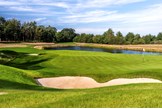 The course at Royal Norwich Golf Club
The course at Royal Norwich Golf Club
-
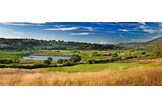 Celtic Manor's Twenty Ten golf course
Celtic Manor's Twenty Ten golf course
-
 Before the move, Royal Norwich Golf Club's committee looks at the plans
Before the move, Royal Norwich Golf Club's committee looks at the plans
-
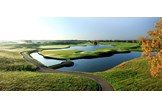 Royal Norwich architect Ross McMurray also designed Le Golf National
Royal Norwich architect Ross McMurray also designed Le Golf National
-
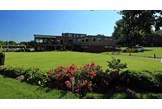 The former home of Royal Norwich Golf Club
The former home of Royal Norwich Golf Club
-
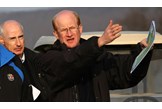 Ross McMurray designed Royal Norwich's golf course.
Ross McMurray designed Royal Norwich's golf course.
-
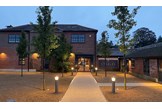 The Stables at Royal Norwich Golf Club
The Stables at Royal Norwich Golf Club
-
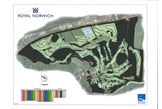 The course map of the new Royal Norwich golf club
The course map of the new Royal Norwich golf club
-
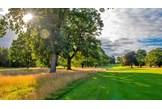 The opening hole at Royal Norwich Golf Club
The opening hole at Royal Norwich Golf Club
-
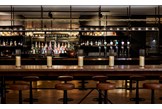 Royal Norwich is as welcoming to non-golfers as it is to golfers
Royal Norwich is as welcoming to non-golfers as it is to golfers
-
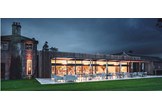 The Stables at Royal Norwich Golf Club
The Stables at Royal Norwich Golf Club
-
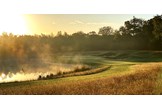 Royal Norwich Golf Club at sunrise
Royal Norwich Golf Club at sunrise
-
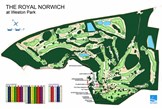 The plan for Royal Norwich Golf Club
The plan for Royal Norwich Golf Club
-
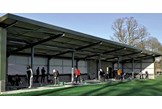 Royal Norwich Golf club's driving range
Royal Norwich Golf club's driving range
-
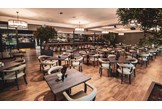 Inside The Stables at Royal Norwich Golf Club
Inside The Stables at Royal Norwich Golf Club
